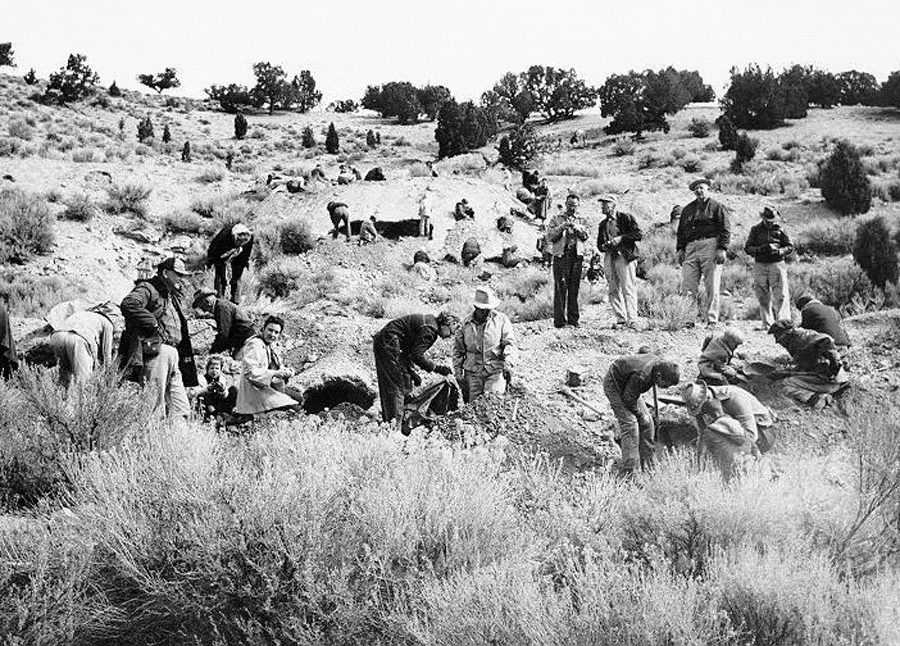In 1881, White River Utes from western Colorado rose up against encroachment by hostile white settlers. The Federal government then forcibly removed the Utes to the Uintah Reservation in Utah. With continued unrest, the government determined to establish a military post nearby.
In August 1886, 75 black soldiers of the 9th U.S. Cavalry under the command of Major Frederick Benteen (of Little Big Horn fame) rendezvoused with their white counterparts in the 21st Infantry, and together the combined troops began constructing what would become Fort Duchesne.
The fort was a rugged affair. Through the first winter, the soldiers lived in canvas tents banked with dirt, each tent with a stove. “Fort Damn Shame” was a nickname the soldiers gave their new home. Its black members were “Buffalo Soldiers” – free black men so named by Native Americans for their curly, dark hair that resembled a buffalo’s.
Interspersed with construction activities, the Buffalo Soldiers patrolled the adjacent reservations. Some of the Ute bands did not take to their new homes, slipping back into Colorado, where the white settlers and government were ready to fight. But the Buffalo Soldiers’ actions toward the Utes allayed the Indians’ initial apprehensions about the blacks and those apprehensions transitioned into trust.
In August 1887, for example, a troop of Buffalo Soldiers entered Colorado to investigate a deadly fight between whites and Utes. The troop met the band of Utes returning to Utah, and determined that a white game warden and his deputies had been the aggressors. The troop escorted the Utes back to Fort Duchesne without further incident.
Sometime later, Ute Chief Colorow led some of his people back to their Colorado homelands. A local sheriff formed a posse to arrest the chief for alleged horse thievery, and gunplay ensued.
Avoiding further violence despite provocations against their women, children, and camp, Colorow’s band retreated toward Utah. Nonetheless the Colorado governor sent the state militia in pursuit. A squad of 10 Buffalo Soldiers under the command of a white lieutenant raced to meet Colorow. Without firing a shot, the Buffalo Soldiers faced down the Coloradans and successfully escorted the chief and his people back to safety. The Indian Agent who rode with the squad wrote to his superiors commending the officer and soldiers for their courage and adroit handling of an explosive situation.
In 1888, prospectors found the valuable hydrocarbon Gilsonite – useful in making paints and lacquers – near Fort Duchesne. The mineral strike led to incursions onto reservation land by white men looking to strike it rich. In these cases, the Buffalo Soldiers provided more escort services, this time shepherding white men off the Native American lands. (These escorts did not last long, as in 1888, Congress designated 7,004 acres containing Gilsonite deposits on the reservation to be open for mining.)

Credit: Park City Historical Society & Museum, Leon Stanley Collection
Construction included roadwork. The 9th was integral in building the road and telegraph line between Price and Fort Duchesne through Nine Mile Canyon. And the route gave them a means to efficiently deliver a $30,000 annuity to the Utes.
The delivery was not straightforward. Rumors had it that Butch Cassidy’s gang was eying the shipment for a heist. A contingent of 40 Buffalo Soldiers met the train at Helper and offloaded the payment into wagons at Price. The soldiers accompanied the Indian Agent and his funds to Fort Duchesne without incident.
When not performing official duties, the Buffalo Soldiers engaged in athletics, competing with the 21st Infantry and local residents in Vernal.
No official win-loss record was kept, though local newpapers noted the Buffalo Soldiers’ skills at baseball, as well as their willingness to engage in fisticuffs when umpires made bad calls.
Off the baseball diamond, the Buffalo Soldiers were also happy to engage in boxing matches with the 21st. As Robert Foster, writing in Wild West Magazine, says: “Of course, a good fistfight relieved some of the dull monotony of garrison duty, and many members of the 21st Infantry were Irishmen who loved a good donnybrook—among themselves, with blacks, whites, or any others who were in the mood.”
The Buffalo Soldiers of the 9th were stationed at Fort Duchesne until 1898. Some of the 9th as well as the 24th Infantry (black soldiers stationed at Fort Douglas in Salt Lake City) completed highly praised service in the Spanish-American War.
The Park City Museum is now exhibiting “Black and White in Black and White: Images of Dignity, Hope and Diversity in America” about African American life in Lincoln, Nebraska just after the turn of the century.